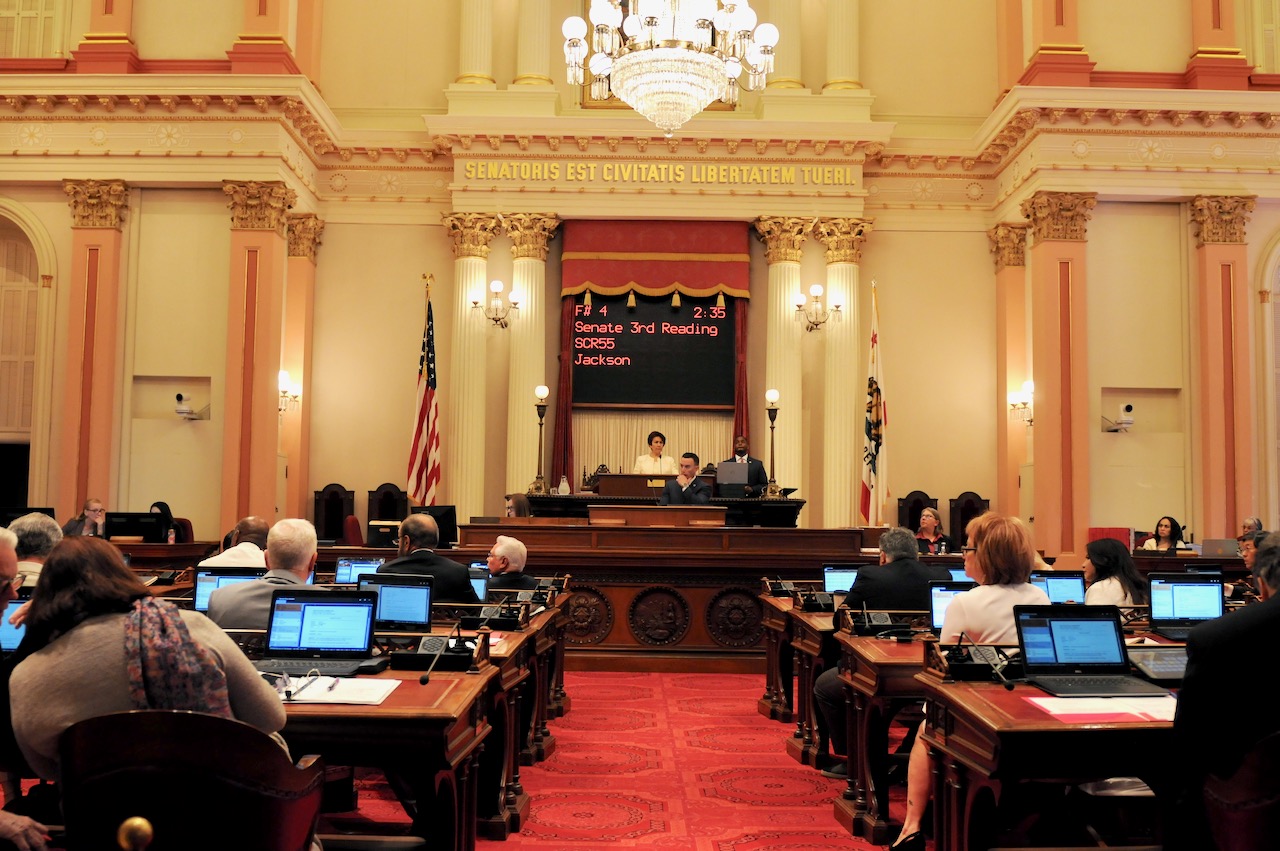
California State Capitol (Photo: Kevin Sanders for California Globe).
Would Legislation Be Strengthened by a Purpose or Intent Statement as Well?
Findings and declarations of the Legislature are intended to ‘set the stage’ for the forthcoming law changes
By Chris Micheli, September 25, 2022 8:09 am
Readers of California legislation are familiar with legislative findings and declarations, usually contained in Section 1 of a bill, prior to the substantive language being set forth in the remainder of the bill. These findings and declarations of the Legislature are intended to “set the stage” for the forthcoming law changes or additions set forth in the bill.
Legislative findings and declarations can also be used by courts in this state in order to assist them in ascertaining legislative intent. However, one shortcoming often found in these legislative findings and declarations is that they are simply policy statements and lack either a statement that they represent “the intent of the Legislature” or that they are statements of purpose of what is meant to be achieved by the bill’s provisions.
As a result, should there be additional language contained after the legislative findings and declarations? For example, should there be an additional section of the bill, or additional provisions at the end of the legislative findings, regarding the actual purpose(s) of the bill or that the Legislature intends something specific with the bill?
The following is an example from this year’s AB 1195 (Cristina Garcia) regarding the Limited Eligibility and Appointment Program. Section 1 of the bill contains seven findings and declarations, followed by three provisions regarding “the purpose of this bill.” The applicable language from the bill is as follows:
SECTION 1.
The Legislature finds and declares all of the following:
(a) It is the policy of this state that state government should serve as a model employer of persons with disabilities.
(b) While Section 31 of Article I of the California Constitution prohibits preferential treatment on the basis of race and sex, it does not bar programs designed to benefit individuals with disabilities and existing law requires state agencies to develop and implement affirmative action employment plans for individuals with disabilities.
(c) The Limited Examination and Appointment Program (LEAP) was designed to facilitate hiring of individuals with disabilities by creating separate employment lists containing the names of candidates with disabilities who have been determined to meet the minimum qualifications for the classification.
(d) Until 2018, a department that was committed to improving the representation of individuals with disabilities in its workforce could request that the Department of Human Resources provide it with a LEAP eligibility list and use that list to select and hire a qualified candidate.
(e) However, if a department did not specifically request the LEAP eligibility list, it would receive only the standard eligibility list for a particular civil service classification.
(f) Senate Bill 866 (hereafter SB 866; Chapter 53 of the Statutes of 2018) sought to ensure that qualified individuals with disabilities on a LEAP eligibility list would not be inadvertently excluded from consideration if a department did not specifically request the LEAP eligibility list.
(g) SB 866 was never intended to preclude a department that wished to hire individuals with disabilities from being able to obtain a separate LEAP eligibility list and use it to select and hire a qualified candidate.
(h) The purpose of this bill is to take another step toward rectifying the continuing underrepresentation of individuals with disabilities in the state workforce by clarifying the law so that both:
(1) Departments are again able, as was the case prior to 2018, to obtain and use a LEAP eligibility list to select and hire qualified individuals with disabilities.
(2) If a department does not specifically request a LEAP eligibility list, it will receive a list that combines the names of candidates on all eligibility lists for a classification, including those on a LEAP list if one exists.
Does having Subdivision (h) assist the courts, as well as others, in determining the intent of the Legislature regarding this bill’s law changes? It might in that the sentences contained in Subdivision (h) specifically call-out the purpose of this bill. There can be little doubt as to what the Legislature wants to do in enacting this bill.
- Sabotage Prevention Act - December 14, 2024
- Why Would the Legislature Request? - December 13, 2024
- A Different Type of Legislative Statement? - December 12, 2024





One thought on “Would Legislation Be Strengthened by a Purpose or Intent Statement as Well?”